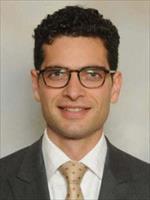UCSF Center for the Rheumatic Diseases
The Center for the Rheumatic Diseases aims to integrate state-of-the art clinical care and cutting edge clinical, translational, and basic research in order to discover the underlying cause(s) of rheumatic diseases, develop new therapies, explore prevention strategies, and ideally find cures.
The Center — positioned within the UCSF Division of Rheumatology — is modeled after the well-established National Institutes of Health (NIH) organizational structure consisting of renowned Clinical Centers, an Intramural Research Program, and an Extramural Research Program. As adapted for our Center, “intramural” refers to work being done by investigators within the rheumatology division, whereas “extramural” refers to collaborations with, or grants awarded to, investigators from other UCSF programs (e.g., ImmunoX, Gladstone Institutes, CZ Biohub).
The Center funds basic and translational research projects with the overarching goal of achieving sustained biomedical progress through the support of creative approaches to science and nucleating novel and meaningful collaborations.
Overarching aims of the Intramural and Extramural Research Programs include:
- Understand the pathogenesis of the rheumatic diseases, including shared immunologic mechanisms.
- Identify novel biomarkers associated with pre-clinical disease, disease heterogeneity, disease prognosis, and prediction of treatment response in order to pave the way towards effective personalized therapeutic approaches.
- Identify novel targets for therapeutic interventions.
Clinical Research Program Director: Dr. Maria Dall’Era
Basic and Translational Research Program Director: Dr. Julie Zikherman
Steering Committee members:
William Seaman
Mary Nakamura
Arthur Weiss
Mehrdad Matloubian
Averil Ma
Mark Anderson
David Wofsy
Inaugural Research Award Recipients
Intramural awardees Fall 2020
Project 1. Exploiting animal models and human samples to identify and study RA-causing arthritogenic T cells
 Investigator: Judith Ashouri M.D.
Investigator: Judith Ashouri M.D.
Dr. Ashouri is a rheumatologist and an immunologist who takes advantage of both animal models and patient samples to understand the pathogenesis of RA. She has been recently recruited as an independent investigator within the Division of Rheumatology. Although the cause of RA is still unknown, multiple lines of evidence converge on CD4 T cells as essential players in disease pathogenesis. CD4 T cells are the architects of the adaptive immune response to infection and each express a unique antigen receptor that allows recognition of a vast range of foreign invaders. Moreover, CD4 T cells have the capacity to license activity of other immune cells (such as B cells and CD8 T cells) and to produce cytokines that promote and amplify autoimmune disease. It is widely accepted that activation of specific CD4 T cells through their unique antigen receptors by self-antigens is necessary for RA to develop. Yet, the specific antigens that trigger and propagate disease in individual patients are undefined, and the identity of these disease-causing pathogenic CD4 T cells has also remained elusive – what other cells do they interact with? What cytokines do they produce? Answering these questions is important in order to develop new biomarkers / diagnostic tests, and to define new therapeutic targets. To address these key knowledge gaps, Drs. Art Weiss and Judith Ashouri have generated a unique mouse model of rheumatoid arthritis by combining an existing system in which disease can be triggered by an immune stimulus with a fluorescent “reporter” of antigen receptor activation first developed in collaboration with Dr. Julie Zikherman. This system has allowed them to capture and profile the gene expression program and functional capacities of self-reactive pathogenic T cells before onset of disease. They have already used this system to show that such pathogenic T cells cause disease, in part, because of abnormally heightened responses to certain cytokines like IL-6 (which may help explain why IL-6 blockade is such an effective therapy in RA) (Ashouri et al. PNAS 2019). Future work is aimed at identifying the antigen receptor specificities and broadly profiling the transcriptional landscape of these cells (i.e. the pattern of gene expression in these cells). This work is made possible by an exciting collaboration with Dr. Jimmie Ye, whose research focuses on development and application of single cell genomic technologies to immunological disease. In addition to experiments in mice, Dr. Ashouri is also working with Dr. Ye to define the transcriptional program of both circulating and pathogenic, joint-infiltrating T and B cells in patients with RA using single cell sequencing approaches. The team intends to take advantage of unique markers of Ag stimulation to pick out disease-driving immune cells. Long-term goals of this work are to discover the triggering antigen and pathogenic T and B cells in individual RA patients. Together, these studies will facilitate a deep understanding of how immune cells promote disease, as well as development of early diagnostic and prognostic measures, and identification of novel targets for treatment and even prevention.
Project 2. Role of the microbiome in RA treatment responses to methotrexate
 Investigator: Dr. Renuka Nayak MD., PhD.
Investigator: Dr. Renuka Nayak MD., PhD.
Dr. Nayak is an adult rheumatologist who is interested in the interaction between the host immune system and colonizing microbes. Although the traditional focus of immunological investigation has been on key cells of the immune system, emerging data suggests that mucosal barrier tissues in which specialized immune cells encounter microbes (benign and harmful) may play a role in initiation of RA. Similarly, the research community is gradually coming to appreciate that the microbes which colonize our skin, intestinal tract and other mucosal tissues (also known as the microbiome -sometimes referred to as our "second genome") reciprocally influence the function of our immune system and play important roles in a range of autoimmune diseases. Dr. Renuka Nayak’s research is focused on understanding the role of the human gut microbiome in treatment responses among patients with RA. She uses an innovative combination of patient specimens, microbiology, next generation sequencing, and gnotobiotic (‘germ-free’) mouse models to do so. Her recent work, under the mentorship of Dr. Peter Turnbaugh, has focused on defining how methotrexate (MTX, the first line and most common drug used to treat RA) is metabolized by the gut microbiome, and how variations in the microbiome may in turn affect disease response to this drug in individual patients. Indeed, although MTX is first-line therapy for RA, it is inadequate in 50-70% of patients. Dr. Nayak hypothesizes that human gut bacteria metabolize MTX into multiple bioactive compounds and that variability in the abundance of microbial metabolizing genes is associated with clinical response. The specific goals of this funded project is to define the molecular mechanisms by which patient-associated gut bacteria metabolize MTX and affect its pharmacology. To do so, she intends to define the full spectrum of MTX metabolites produced by RA patient microbiota and also to identify microbial genes that metabolize MTX. Future work will broaden and translate these studies into the clinic to optimize a precision approach to medicine in which individual variation to treatment response can be understood and even predicted. She is establishing an independent laboratory within the Rheumatology Division to do so.
Extramural awardees June 2021
Project 1. Keratinocyte-mediated induction of psoriatic skin and joint disease
 Investigator: Dr. Bahram Razani MD., PhD.
Investigator: Dr. Bahram Razani MD., PhD.
Dr. Razani is a dermatologist who has trained in molecular immunology, most recently as a post-doctoral fellow with Dr. Averil Ma studying the gene Tnfaip3 (encoding the protein A20). He has been recruited to start an independent lab at UCSF in 2022 within the Department of Dermatology. A20 negatively regulates a critical signaling pathway that serves to downmodulate and ultimately terminate normal immune responses. Defects in this pathway are implicated (via both rare and common genetic variants) in many different autoimmune diseases, including RA and lupus. Dr. Razani has developed a new mouse model in which inducible deletion of Tnfaip3 in skin cells rapidly induces a psoriasis-like skin lesion and associated changes in adjacent nail and joint structures that closely resemble psoriatic arthritis. This is a novel and powerful model of a major rheumatic disease which recapitulates key clinical features of disease and provides a unique opportunity to understand what cells and what molecules in psoriatic skin drive autoimmune and inflammatory disease in joints and peri-joint structures. Dr. Razani has already identified several key pathways involved in this process and this grant will explore new molecules and cell types that may mediate the disease. This work has implications for understanding this disease, allied conditions, and has promise to open new therapeutic avenues.
Project 2. Ikaros control of medullary thymic epithelial cell development and thymic central tolerance
 Investigator: Dr. Michael Waterfield MD., PhD.
Investigator: Dr. Michael Waterfield MD., PhD.
Dr. Waterfield is a pediatric rheumatologist and immunologist, and collaborator Dr. Schjerven is a molecular immunologist in the Department of Laboratory Medicine at UCSF. Dr. Waterfield trained in the lab of Dr. Mark Anderson, where he focused on an important pathway that serves to prevent autoimmune disease. Dr. Waterfield has recently started an independent laboratory at UCSF. T cells expressing a vast range of possible receptors on their surface capable of responding to microbes (antigen receptors) develop in an organ known as the thymus. During development, T cells undergo selection to ensure that any cells expressing antigen receptors that are capable of reacting against the body’s own tissues are eliminated. To facilitate this process (termed central tolerance), specialized cells within the thymus known as mTECs (medullary thymic epithelial cells) display an array of protein fragments representing key tissues in order to delete T cells with antigen receptors that recognize these fragments. In the absence of these cells, humans (and mice) develop a broad range of tissue-specific autoimmune diseases. Yet, how mTECs develop and how they are programmed to “project a self shadow within the thymus” is not fully understood.
Dr. Schjerven has spent her post-doctoral training and focused her independent lab on dissecting the many functions of an important protein, Ikaros, which regulates gene expression in many immune cell types. Together, Dr. Waterfield and Dr. Schjerven discovered that Ikaros plays a key role in mTECs and is critical both for their normal development and for their expression of tissue-specific antigens. Importantly, mutations in the gene that encodes Ikaros are associated with human autoimmunity. The project funded by the inaugural IRD extramural grant will test the hypothesis that Ikaros is functions to suppress autoimmune disease in part via its role in mTECs, and will define the mechanism by which it does so. This work has major implications for understanding the basic processes that suppress human autoimmunity, and the genetic variants that predispose to it.
